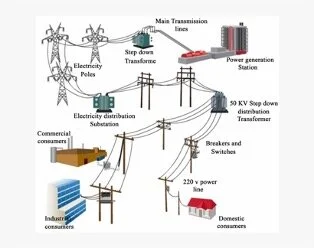Cost of Homeowner Solar Power - the Costs Before the Meter
Homeowner solar power has unadvertised costs of ownership
I love you! No, now I don't like you!
Not to be too general, but it is no secret that some solar electric customers have a love/hate relationship with their power supplier. At night, solar customers love their supplier. The sun goes down, battery storage is used up (or doesn't exist yet), and the power to their homes continues and is supplied by their power supplier.
Then the sun comes up and their solar panels kick in. "What was I thinking? What do I need you for, my power supplier? I can generate my own needs. We should see others."
That's not the exact conversation, but sometimes it's not far off. We are not anti-customer solar power generation or solar panels at all. It has a solid place in the power supply portfolio of any power supplier, but there is a cost to both the solar power customer and the power supplier that should be recognized.
I have solar power, I still need to pay a monthly connection fee to the electric utility?
The solar panels generate energy (kWh) which the solar customer uses, and any power generated in excess of the customer’s needs is sold back to the power supplier. Unless the solar customer is a standalone microgrid, they still are connected to the power supplier's system through an electric service (i.e., the wires to the home). The electric service is part of the local power supplier’s distribution system that connects all their customers. The following diagram shows the delivery system of electricity, from the power plant to the end-user.
The cost of this connection can be quantified for each customer and billed as a monthly customer fixed charge. The fixed customer charge can range from $15 - $50 per month per customer. This cost is determined through an electric cost of service study.
The cost of being connected to the power supplier is called "the available for use charge," i.e., the cost of receiving electric power whenever the customer wants it by "flipping the switch".
The electric cost savings for the solar customer and power supplier come from the power supplier's avoided cost of energy purchases. The supplier buys fewer kWh's because the solar customer generates and uses their kWh. An amount can be assigned to the avoided cost based on market pricing at the point in time when the solar customer generation occurs. Power suppliers pass the avoided cost savings back to solar customers as a credit on the customer's monthly bill. Different customer credit methods include:
- Credit per kWh to the solar customer based on the budgeted cost savings to the power supplier
- Credit per kWh to the solar customer based on the real-time market price for energy at the time the customer generates solar power
Utility Accounting and Rates Specialists provides on-line/on-demand courses on operations and construction project accounting, rates, and management for new and experienced co-op and utility professionals and Board Members. Click on the button to see courses that will enhance your career skills and provide value to your organization!
Energy cost savings are only part of the equation for solar power customers. The cost of being connected to the power supplier must also be paid by the solar power customer, as they are supplied energy by the power supplier when the customer cannot produce their power (at night or on a cloudy day)
How does the customer save money with solar panels?
From the customer's perspective, actual cost savings don't materialize until the solar installation cost has been recovered. This payback period can be calculated as:
(Total cost of solar installation - Credits and rebates)/(Expected solar generation x Expected power supplier credit per kWh) = payback period
This calculation does not include a discount factor for the cost of funds over the payback period. The customer also needs to factor:
- How long do they expect to remain in their home or
- Can the remaining cost of the solar installation be included in the sale of their home if they move before the end of the payback period
Know your motivation to install solar generation
Whether your motivation is to install solar panels on your home for environmental reasons or your motivation is based on cost savings, calculating the cost of ownership is one of the factors that should be part of any decision.
About Russ Hissom - Article Author
Russ Hissom, CPA is a principal of Utility Accounting & Rates Specialists a firm that provides power and utilities rate, expert witness, and consulting services, and online/on-demand courses on accounting, rates, FERC/RUS construction accounting, financial analysis, and business process improvement services. Russ was a partner in a national accounting and consulting firm for 20 years. He works with electric investor-owned and public power utilities, electric cooperatives, broadband providers, and gas, water, and wastewater utilities. His goal is to share industry best practices to help your business perform effectively and efficiently and meet the challenges of the changing power and utilities industry.
Find out more about Utility Accounting & Rates Specialists here, or you can reach Russ at russ.hissom@utilityeducation.com.
The material in this article is for informational purposes only and should not be taken as legal or accounting advice provided by Utility Accounting & Rates Specialists. You should seek formal advice on this topic from your accounting or legal advisor.




